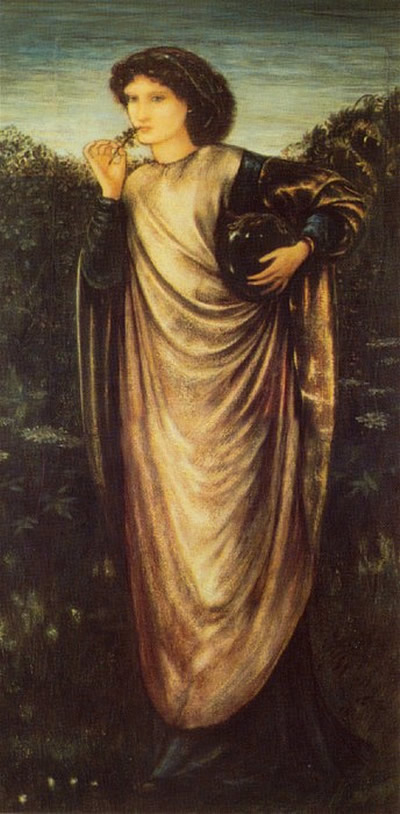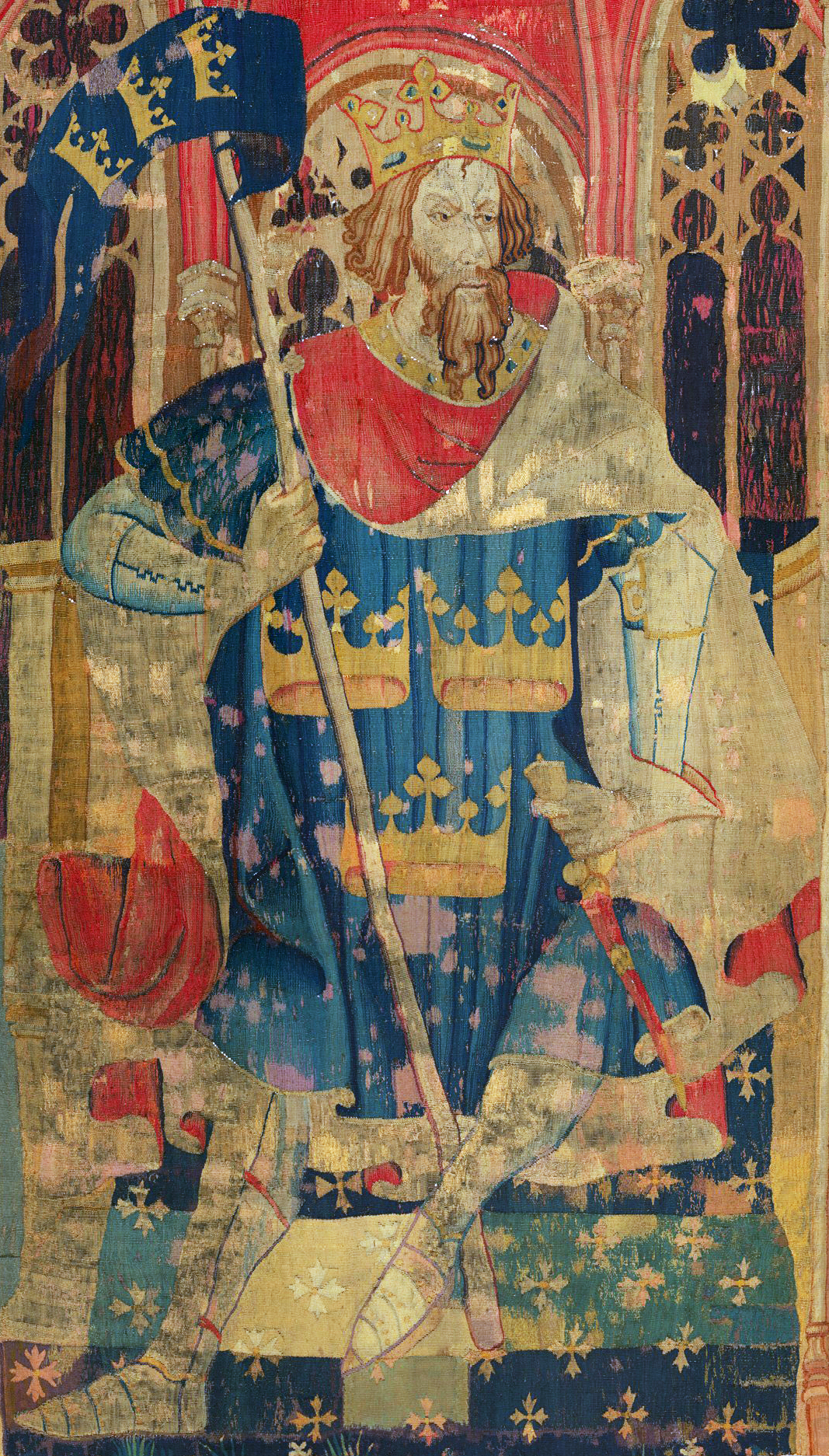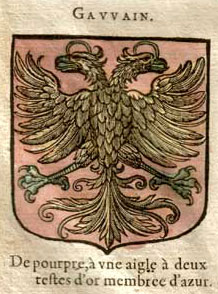|
Excalibur
Excalibur is the mythical sword of King Arthur that may possess magical powers or be associated with the rightful sovereignty of Britain. Its first reliably datable appearance is found in Geoffrey of Monmouth's ''Historia Regum Britanniae''. Excalibur as the "sword in the stone" functioning as the proof of Arthur's lineage is an iconic motif featured throughout most works dealing with Arthur's youth since its introduction in Robert de Boron's ''Merlin''. The sword given to the young Arthur by the Lady of the Lake in the tradition that began soon afterwards with the '' Post-Vulgate Cycle'' is not the same weapon, but in '' Le Morte d'Arthur'' both of them share the name of Excalibur. Several similar swords and other weapons also appear within Arthurian texts, as well as in other legends. Forms and etymology The name ''Excalibur'' ultimately derives from the Welsh ( Breton , Middle Cornish ), which is a compound of , , and , . Caledfwlch appears in several early Welsh wo ... [...More Info...] [...Related Items...] OR: [Wikipedia] [Google] [Baidu] |
Lady Of The Lake
The Lady of the Lake (, , , , ) is a title used by multiple characters in the Matter of Britain, the body of medieval literature and mythology associated with the legend of King Arthur. As either actually fairy or fairy-like yet human enchantresses, they play important roles in various stories, notably by providing Arthur with the sword Excalibur, eliminating the wizard Merlin, raising the knight Lancelot after the death of King Ban, his father, and helping to take the dying Arthur to Avalon after Battle of Camlann, his final battle. Different Ladies of the Lake appear concurrently as separate characters in some versions of the legend since at least the Post-Vulgate Cycle and consequently the seminal ''Le Morte d'Arthur'', with the latter describing them as members of a hierarchical group, while some texts also give this title to either Morgan le Fay, Morgan or Morgause, her sister. Names and origins Today, the Lady of the Lake is best known as the character called either Nimue ... [...More Info...] [...Related Items...] OR: [Wikipedia] [Google] [Baidu] |
Magic Sword
In mythology, legend or fiction, a magic sword is a sword with magical powers or other supernatural qualities. Renowned swords appear in the folklore of every nation that used swords.Josepha Sherman, ''Once upon a Galaxy'' p 113 In some traditions, the sword is ascribed no powers of its own. It is famous because it is the hero's sword, or because of its origin, as when a god gives it to the hero. Other swords keep their wielders safe or destroy their enemies. A more localized motif is the sword that has been broken and must be reforged, commonly found in Northern Europe. Such a sword symbolizes the initial defeat and loss of honor of its wielder. Subsequent victory and the restoration of honor is achieved by reforging it, either at the wielder's hand or that of his heir. History It is probable that the roots of the sentient weapon myths stem from ancient peoples' belief that sword making and metallurgy was in fact a magical process. Through the fires of the forge (''fire was ... [...More Info...] [...Related Items...] OR: [Wikipedia] [Google] [Baidu] |
Legendary Swords
Mythological objects encompass a variety of items (e.g. weapons, armor, clothing) found in mythology, legend, folklore, tall tale, fable, religion, spirituality, superstition, paranormal, and pseudoscience from across the world. This list is organized according to the category of object. Armor Armor * Armor of Achilles, created by Hephaestus and said to be impenetrable. (Greek mythology) * Armor of Beowulf, a mail shirt made by Wayland the Smith. (Anglo-Saxon mythology) * Armor of Örvar-Oddr, an impenetrable "silken mailcoat". (Norse mythology) * Babr-e Bayan, a suit of armor that Rostam wore in wars described in the Persian epic ''Shahnameh''. The armor was invulnerable against fire, water and weapons. (Persian mythology) * Golden Coat of Chainmail, part of Fafnir's treasure which Sigurd took after he slew the dragon. (Norse mythology) * Green Armor, protects the wearer from physical injuries. (Arthurian legend) * Kavacha, the armor of Karna that was granted to him by ... [...More Info...] [...Related Items...] OR: [Wikipedia] [Google] [Baidu] |
Morgan Le Fay
Morgan le Fay (; Welsh language, Welsh and Cornish language, Cornish: Morgen; with ''le Fay'' being garbled French language, French ''la Fée'', thus meaning 'Morgan the Fairy'), alternatively known as Morgan[n]a, Morgain[a/e], Morgant[e], Morg[a]ne, Morgayn[e], Morgein[e], and Morgue[in] among other names and spellings, is a powerful and ambiguous Magician (fantasy), enchantress from the legend of King Arthur, in which most often she and he are siblings. Early appearances of Morgan in Arthurian literature do not elaborate her character beyond her role as a goddess, a fairy , fay, a Witchcraft , witch, or a sorceress, generally benevolent and connected to Arthur as his magical saviour and protector. Her prominence increased as the legend of Arthur developed over time, as did her moral ambivalence, and in some texts there is an evolutionary transformation of her to an antagonist, particularly as portrayed in cyclical prose such as the ''Lancelot-Grail'' and the Post-Vulgate Cyc ... [...More Info...] [...Related Items...] OR: [Wikipedia] [Google] [Baidu] |
Bedivere
Bedivere ( or ; ; ; , also Bedevere and other spellings) is one of the earliest characters to be featured in the legend of King Arthur, originally described in several Welsh texts as the one-handed great warrior named Bedwyr Bedrydant. Arthurian chivalric romances, inspired by his portrayal in the chronicle ''Historia Regum Britanniae'', portray Bedivere as a Knights of the Round Table, Knight of the Round Table of King Arthur who serves as Arthur's marshal and is frequently associated with his brother Sir Lucan, Lucan and his cousin Griflet as well as with Sir Kay, Kay. In the English versions, Bedivere notably assumes Griflet's hitherto traditional role from French romances as the one who eventually returns Excalibur to the Lady of the Lake after Battle of Camlann, Arthur's last battle. Bedwyr In early Welsh sources, Bedwyr Bedrydant ("Bedwyr of the Perfect Sinew") is a handsome, one-handed warrior under King Arthur, Arthur's command. His father is given as Pedrawd or Bedraw ... [...More Info...] [...Related Items...] OR: [Wikipedia] [Google] [Baidu] |
Le Morte D'Arthur
' (originally written as '; Anglo-Norman French for "The Death of Arthur") is a 15th-century Middle English prose reworking by Sir Thomas Malory of tales about the legendary King Arthur, Guinevere, Lancelot, Merlin and the Knights of the Round Table, along with their respective folklore. In order to tell a "complete" story of Arthur from his conception to his death, Malory compiled, rearranged, interpreted and modified material from various French and English sources. Today, this is one of the best-known works of Arthurian literature. Many authors since the 19th-century revival of the legend have used Malory as their principal source. Apparently written in prison at the end of the medieval English era, ''Le Morte d'Arthur'' was completed by Malory around 1470 and was first published in a printed edition in 1485 by William Caxton. Until the discovery of the Winchester Manuscript in 1934, the 1485 edition was considered the earliest known text of ''Le Morte d'Arthur'' an ... [...More Info...] [...Related Items...] OR: [Wikipedia] [Google] [Baidu] |
King Arthur
According to legends, King Arthur (; ; ; ) was a king of Great Britain, Britain. He is a folk hero and a central figure in the medieval literary tradition known as the Matter of Britain. In Wales, Welsh sources, Arthur is portrayed as a leader of the Sub-Roman Britain, post-Roman Britons in battles against the Anglo-Saxons in the late-5th and early-6th centuries. He first appears in two early medieval historical sources, the ''Annales Cambriae'' and the ''Historia Brittonum'', but these date to 300 years after he is supposed to have lived, and most historians who study the period Historicity of King Arthur, do not consider him a historical figure.Tom Shippey, "So Much Smoke", ''review'' of , ''London Review of Books'', 40:24:23 (20 December 2018) His name also occurs in early Welsh-language literature, Welsh poetic sources, such as ''Y Gododdin''. The character developed through Welsh mythology, appearing either as a great warrior defending Britain from human and supernatura ... [...More Info...] [...Related Items...] OR: [Wikipedia] [Google] [Baidu] |
Griflet
The Knights of the Round Table (, , ) are the legendary knights of the fellowship of King Arthur that first appeared in the Matter of Britain literature in the mid-12th century. The Knights are a chivalric order dedicated to ensuring the peace of Arthur's kingdom following an early warring period, entrusted in later years to undergo a mystical quest for the Holy Grail. The Round Table at which they meet is a symbol of the equality of its members, who range from sovereign royals to minor nobles. The various Round Table stories present an assortment of knights from all over Great Britain and abroad, some of whom are even from outside of Europe. Their ranks often include Arthur's close and distant relatives, such as Agravain, Gaheris and Yvain, as well as his reconciled former enemies, like Galehaut, Pellinore and Lot. Several of the most notable Knights of the Round Table, among them Bedivere, Gawain and Kay, are based on older characters from a host of great warriors as ... [...More Info...] [...Related Items...] OR: [Wikipedia] [Google] [Baidu] |
Gawain
Gawain ( ), also known in many other forms and spellings, is a character in Matter of Britain, Arthurian legend, in which he is King Arthur's nephew and one of the premier Knights of the Round Table. The prototype of Gawain is mentioned under the name Gwalchmei in the earliest Welsh sources. He has subsequently appeared in many Arthurian tales in Welsh, Latin, French, English, Scottish, Dutch, German, Spanish, and Italian, notably as the protagonist of the Middle English poem ''Sir Gawain and the Green Knight''. Other works featuring Gawain as their central character include ''De Ortu Waluuanii'', ''Diu Crône'', ''Ywain and Gawain'', ''Golagros and Gawane'', ''Sir Gawain and the Carle of Carlisle'', ''L'âtre périlleux'', ''La Mule sans frein'', ''La Vengeance Raguidel'', ''Le Chevalier à l'épée'', ''Vulgate Cycle, Le Livre d'Artus'', ''The Awntyrs off Arthure'', ''The Greene Knight'', and ''The Wedding of Sir Gawain and Dame Ragnelle, The Weddynge of Syr Gawen and Dame ... [...More Info...] [...Related Items...] OR: [Wikipedia] [Google] [Baidu] |
Post-Vulgate Cycle
The Post-Vulgate Cycle, also known as the Post-Vulgate Arthuriad, the Post-Vulgate ''Roman du Graal'' (''Romance of the Grail'') or the Pseudo-Robert de Boron Cycle, is one of the major Old French -4; we might wonder whether there's a point at which it's appropriate to talk of the beginnings of French, that is, when it wa ... cycles of Arthurian">prose Literature cycle">cycles of Arthurian literature from the early 13th century. It is considered essentially a rewriting of the earlier and more popular Vulgate Cycle (also known as the ''Lancelot-Grail'' cycle), with much left out but also much added, including characters and scenes from the Prose ''Tristan''. The cycle did not survive in its entire original form, but has been reconstructed from fragments in several medieval languages. History The Post-Vulgate Cycle, written anonymously probably between 1230 and 1235 (different estimates of the beginning date) to 1240 (1250 according to J.D. Bruce) in its original form. It did n ... [...More Info...] [...Related Items...] OR: [Wikipedia] [Google] [Baidu] |
Caladbolg
''Caladbolg'' ("hard cleft", also spelled Caladcholg, "hard blade") is the sword of Fergus mac Róich from the Ulster Cycle of Irish mythology.James MacKillop, ''Dictionary of Celtic Mythology'', Oxford University Press, pp. 64-65 Fergus calls his sword by that name in ''Táin Bó Cúailnge''. Ailill mac Máta had stolen Fergus's sword when he caught him ''in flagrante'' with Medb. Fergus carved a dummy wooden sword to disguise the fact he was unarmed.Cecile O'Rahilly (ed. & trans.), ''Táin Bó Cúailnge Recension 1'', Dublin Institute for Advanced Studies, 1976 Ailill returns the sword to him before the final battle, and Fergus speaks a poem over it, calling it ''Caladcholc'' in one version, and ''Caladbolg'' in another.Cecile O'Rahilly (ed. & trans.), ''Táin Bó Cúailnge from the Book of Leinster'', Dublin Institute for Advanced Studies, 1970 It is said to have been "the sword of Leite from the elf-mounds. When one wished to strike with it, it was as big as a rainbow in the ai ... [...More Info...] [...Related Items...] OR: [Wikipedia] [Google] [Baidu] |








